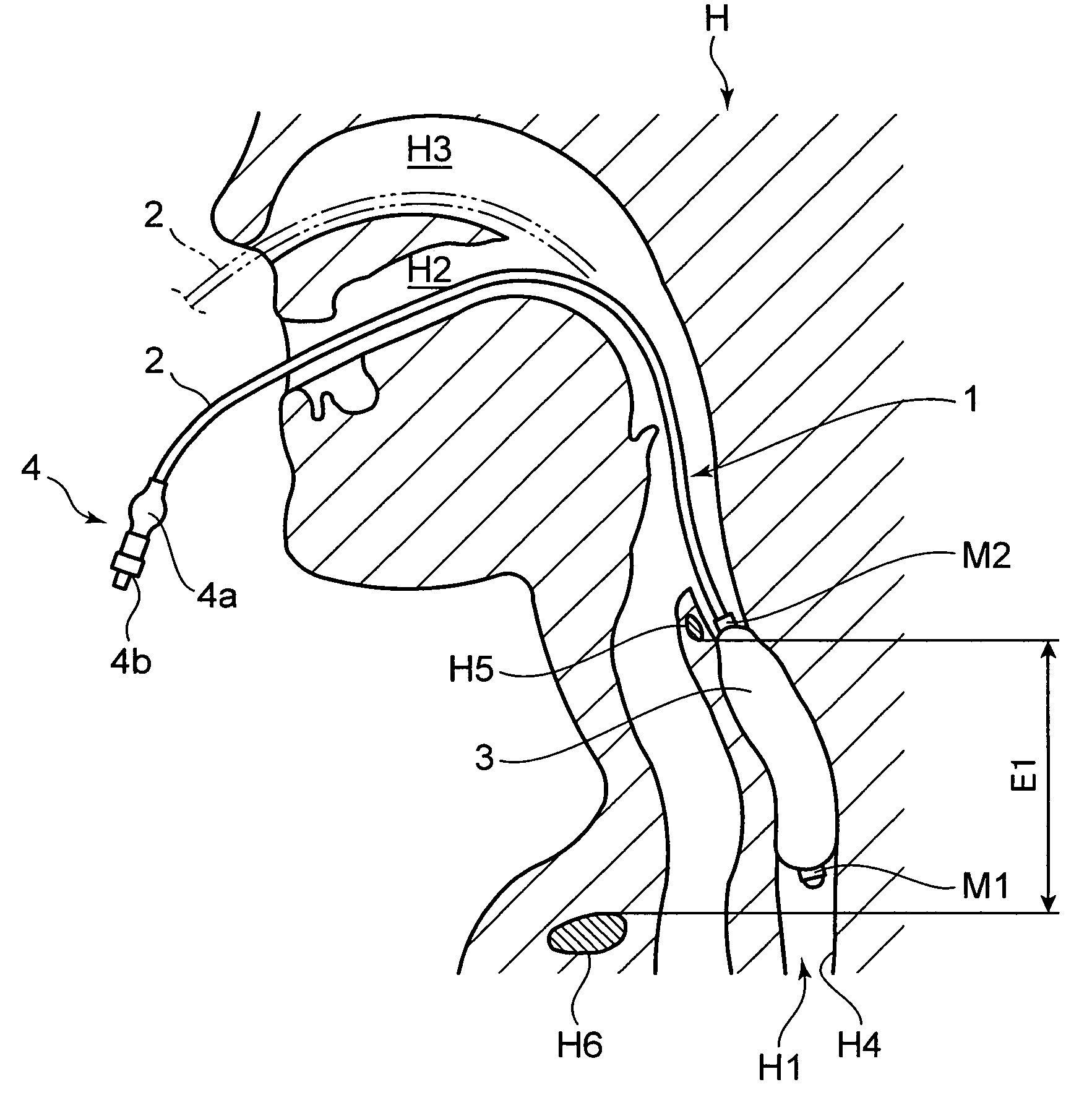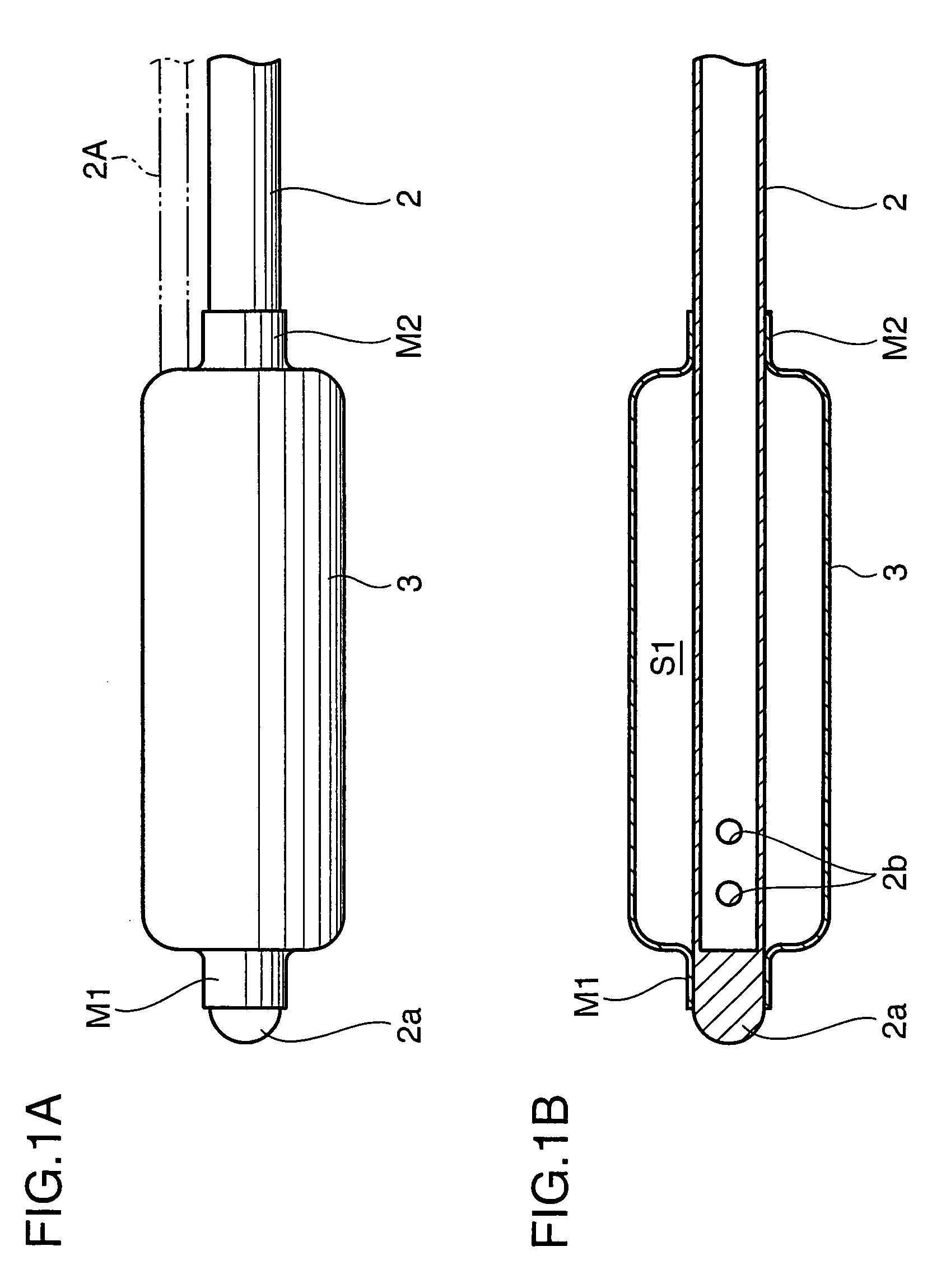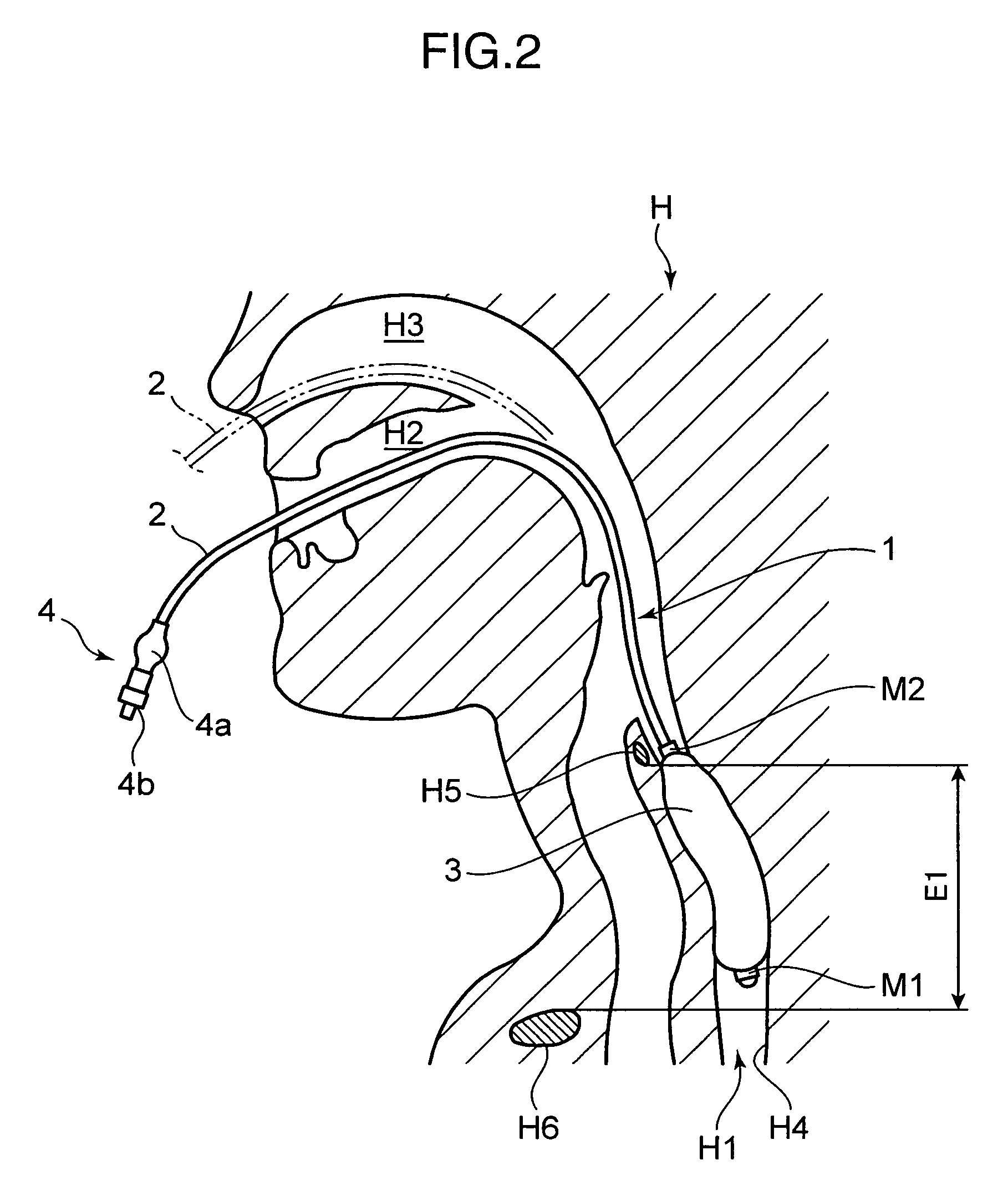Brain Cooling Device and Brain Cooling System Comprising the Device
a brain cooling and brain technology, applied in the field of brain cooling devices, can solve the problems of ischemic neuron damage, brain cell death, and insufficient oxygen supply to the brain, and achieve the effect of enhancing workability
- Summary
- Abstract
- Description
- Claims
- Application Information
AI Technical Summary
Benefits of technology
Problems solved by technology
Method used
Image
Examples
first embodiment
[0036]FIG. 1 shows a shape of the tip end of a brain cooling device according to the invention. FIG. 1A is a side view and FIG. 1B is a sectional side view. FIG. 2 is a sectional side view showing a state where the brain cooling device of FIG. 1 is inserted into a patient.
[0037]Referring to the respective drawings, a brain cooling device (hereinafter, referred to as the cooling device) 1 includes a tube (infusion and discharge means) 2, a cuff (storage portion) 3 provided to one end of the tube 2, and a port 4 provided to the other end on the opposite side of the cuff 3. Hereinafter, the tube 2 will be described on the assumption that the side provided with the cuff 3 is the tip end and the side provided with the port 4 is the base end.
[0038]The tube 2 is a tubular member made of synthetic resin, such as polyamide and polyvinyl chloride. Also, the tube 2 is closed by a bottom portion 2a at the tip end and is provided with plural side holes 2b (two side holes are illustrated in FIG. ...
second embodiment
[0062]FIG. 3 shows a shape of the tip end of a cooling device according to the invention. FIG. 3A is a plan view and FIG. 3B is a side view. FIG. 4 is a cross section taken on line IV-IV of FIG. 3B.
[0063]FIG. 5A is a sectional side view showing a state where an endotracheal tube is inserted into the patient to describe the procedure to insert the cooling device of FIG. 3 into a patient. FIG. 5B is a sectional side view showing a state where the cooling device is inserted to describe the procedure to insert the cooling device of FIG. 3 into the patient.
[0064]Referring to the respective drawings, a cooling device 5 includes the tube 2, a cuff 6 provided to the tip end of the tube 2, a pair of discharge tubes 7 extending from the base end of the cuff 6, and the port 4 provided to each of the base ends of the tube 2 and the discharge tubes 7.
[0065]The cuff 6 is a bag-shaped member made of silicone resin, flexible polyvinyl chloride, or the like. To be more concrete, the cuff 6 includes ...
third embodiment
[0086]FIG. 6 is a side view showing the overall configuration of a brain cooling system according to the invention. FIG. 7 shows the enlarged tip end of the brain cooling system of FIG. 6. FIG. 7A is a plane view and FIG. 7B is a bottom view. FIG. 8 is a cross section taken on line VIII-VIII of FIG. 7. FIG. 9 is a cross section taken on line IX-IX of FIG. 7. FIG. 10 is a sectional side view showing a state of use of the brain cooling system of FIG. 6.
[0087]Referring to the respective drawings, a brain cooling system 18 (hereinafter, referred to as the cooling system 18) is formed by combining a pharyngeal mask (airway maintaining member) 19 that allows a gas passage into the trachea H8 while blocking a gas passage into the esophagus H1 of the patient H, and a cooling device 20 that cools the esophagus H1 and the pharyngeal region T of the patient H.
[0088]To be more concrete, the pharyngeal region mask 19 includes a tube main body 21 formed in an almost circular arc shape, a connecto...
PUM
 Login to View More
Login to View More Abstract
Description
Claims
Application Information
 Login to View More
Login to View More - R&D
- Intellectual Property
- Life Sciences
- Materials
- Tech Scout
- Unparalleled Data Quality
- Higher Quality Content
- 60% Fewer Hallucinations
Browse by: Latest US Patents, China's latest patents, Technical Efficacy Thesaurus, Application Domain, Technology Topic, Popular Technical Reports.
© 2025 PatSnap. All rights reserved.Legal|Privacy policy|Modern Slavery Act Transparency Statement|Sitemap|About US| Contact US: help@patsnap.com



